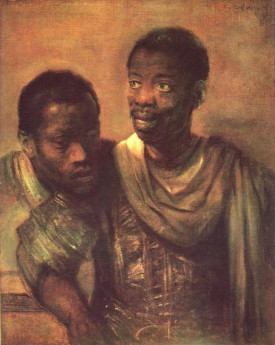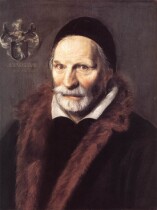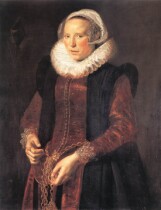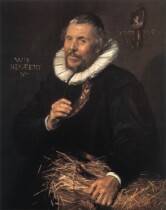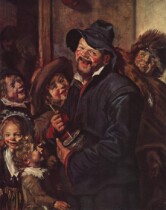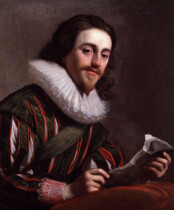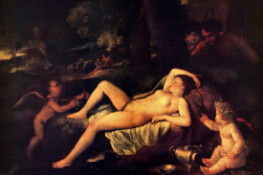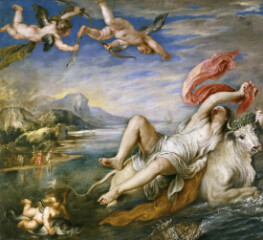Malle Babbe
Malle Babbe is one of the most notable examples of Hals’s ‘rough’ painting style. Through his bold and loose brushstrokes, Hals captured the older woman’s spontaneous movement and her full-throated cackle. The painting was admired by 19th-century scholars and artists, such as Realist painter Gustav Courbet, who even created a copy of the painting, Malle Babbe (1869). The spontaneous quality of the painting led to speculations that Malle Babbe was created in a single sitting through a burst of inspiration. However, scans have conclusively proven that the painting has several layers. The painting is sometimes categorized as a tronie, a type of painting that was popular in the Dutch Golden Age and Flemish Baroque art. Tronie, which means ‘face,’ is a study and portrayal of exaggerated facial expressions or stereotypical characters. Tronie paintings, unlike commissioned portraits, were made to be sold in the open market. Since Hals sold his art in public markets, he was familiar with tronie paintings created by different artists. Most likely, he was influenced by Flemish tronie painters like Peter Paul Rubens, Anthony van Dyck, and Jacob Jordaens, who successfully captured facial features through individual brushstrokes.
The character of Malle Babbe is depicted with a beer mug and an owl seated on her shoulder. Most commonly, the owl is associated with wisdom; however, it also holds other symbolic meanings that can prove relevant to the analysis of Hals’s painting. Because the owl is a nocturnal animal that prefers darkness to light, it was used as a symbol of sin and the power of evil over man. This well-established tradition in Rotterdam drawing was employed by artists such as Hieronymus Bosch in his drawing The Owl’s Nest (ca. 1505-1516). Besides, the owl was a famous symbol of folly and vulgarity. The bird was also associated with drunkenness, according to a Dutch proverb, ‘drunk as an owl.’ This symbolism probably stems from the bird’s clumsy and fluttering movements during the daytime.
Records show that Malle Babbe was a real person, who resided in a charitable institution for the mentally ill in Haarlem. It is possible that Hals knew the woman because his mentally impaired son Pieter was confined in the same institution. The woman probably suffered from mental illness or alcoholism, both options explain the iconography of the large mug and owl. The word ‘malle’ means crazy, so possibly it was a portrait of a figure known among commoners in Haarlem. However, this could also be a genre portrait that carries an allegorical meaning. Genre portraits depicted lower classes, such as peasants, musicians, or merry drinkers. These portraits often made moral judgments on sensory pleasures. In this context, Malle Babbe might be an allegory for insanity and foolishness or a warning against the dangers of drunkenness.
